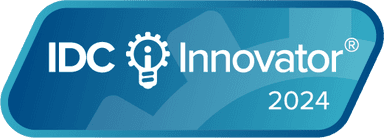Aug 04, 2025
Subscription management system basics: What scaling SaaS companies need
Growing fast? See why scaling SaaS companies need a subscription management and billing system built for usage-based pricing and complex models.
For high-growth SaaS companies, managing billing operations used to be a back-office function—reliable but largely invisible. But as the industry shifts toward more dynamic pricing models, particularly usage-based pricing, the once-reliable systems many companies started with are quickly becoming liabilities. Traditional subscription management systems can’t keep up with the flexibility, complexity, and real-time demands of today’s go-to-market motions.
In this post, we’ll unpack what a subscription management system is, why legacy tools are struggling to meet modern needs, and how leading SaaS companies are rethinking their quote-to-cash systems to support usage-based billing at scale.
What Is a Subscription Management System?
At its core, a subscription management system is a middle-office platform that connects sales systems (like your CRM) with finance systems (like your ERP). It manages everything from plan changes and pricing rules to invoice generation and revenue recognition. The goal? Automate billing, streamline operations, and provide real-time insight into MRR, churn, and customer behavior.
These systems are foundational for cross-functional collaboration. Product teams rely on them to launch new pricing models. Finance uses them to close the books and maintain compliance (e.g. ASC606, IFRS15). Sales and CS teams need visibility into usage and billing data to drive renewals and expansions.
Popular vendors like Zuora, Chargebee, and Recurly have historically served SaaS companies well. They integrate with common tools like Salesforce and NetSuite, and they’re built with the recurring revenue model in mind. But therein lies the problem: they were built for subscriptions, not usage.
The Rise of Usage-Based Pricing and the Limits of Legacy Systems
Over the past few years, usage-based pricing has moved from a niche strategy to a dominant force in SaaS. According to OpenView, over 60% of SaaS companies now use some form of usage-based or hybrid pricing—and that number is only growing.
This shift is being driven by several trends:
- The rise of AI-driven product features, which have variable costs and encourage usage-based pricing to protect margins.
- The rise of API-based products, which involve systems talking to systems, undermining traditional seat-based pricing.
- A shift to product-led growth (PLG), where free and pay-as-you-go tiers lower entry barriers.
- Increasing customer demand for pricing models that better align cost with value received.
Companies like Snowflake, Twilio, and ClickHouse have proven that usage-based models can drive massive growth, but they also introduce operational complexity. Metered billing software needs to handle real-time data ingestion, multi-attribute pricing, and on demand billing cycles—challenges that traditional subscription tools weren’t designed to solve.
The Hidden Costs of Outdated Subscription Management Solutions
As SaaS companies grow, the cracks in legacy systems begin to show:
Manual workarounds:
Finance teams often need to extract usage data manually, apply pricing in spreadsheets, and upload invoices into the subscription management system. This slows billing cycles and introduces errors.
Revenue leakage:
When usage data isn’t accurately captured or billed, companies lose money. Common causes include out-of-date pricing, untracked usage, and poor integration between systems.
Inflexible pricing:
Launching a new pricing model—say, token-based pricing or regional pricing—can take weeks or months and often requires engineering effort.
Poor customer experience:
Customers want transparency. If your billing system can’t deliver accurate usage statements or real-time spend data, your CS team will feel the pain.
Audit risk:
Without proper traceability, reconciling revenue during an audit becomes a nightmare.
In short, these legacy systems are gumming up your quote-to-cash processes at the exact moment when flexibility, speed, accuracy, and pricing agility matter most.
What a Modern Subscription Management System Looks Like
To support usage-based billing and SaaS pricing complexity, companies need a modern subscription management system that goes beyond static subscriptions. Here’s what that looks like:
Real-time metering and rating:
The system should support event-level ingestion and attach pricing logic to any number of usage attributes—volume, tier, geography, and more.
Flexible pricing models:
The ability to configure a wide variety of models, including token-based, consumption-based, hybrid, commitments, and usage balances—whatever your go-to-market requires.
Automated billing:
Invoices should be generated automatically with accurate proration, discount handling, and rev rec categorization.
Self-service transparency:
Give your customers access to usage dashboards and billing summaries in real-time, directly in the product or portal.
Integrations with core systems:
A modern tool should plug into Salesforce, NetSuite, and your production environment to ensure seamless automated data flows between them.
Why It Matters: The Business Case for Upgrading
Adopting a metered billing software solution isn’t just about operational hygiene—it’s a growth enabler.
- Reduce revenue leakage by 2–5% with more accurate billing and fewer missed charges.
- Accelerate financial close to under two days by automating the order-to-cash cycle.
- Improve pricing agility and bring new products or plans to market faster.
- Enhance customer trust with transparent, reliable billing that reflects actual usage.
How to Know It’s Time to Upgrade
You might be ready to modernize your billing infrastructure if:
- You’ve passed $50M ARR and are scaling fast.
- You’re launching a new product with usage-based pricing.
- You’re adopting PLG or marketplace distribution.
- You’re seeing friction in quote-to-cash workflows or compliance audits.
- You’re experiencing billing delays, revenue leakage, or missed renewals due to poor visibility into usage.
Why m3ter Is Purpose-Built for Usage-Based Billing
m3ter was designed from the ground up to solve these problems. It’s not a generalist billing tool—it’s a specialized metered billing software platform that fits into complex SaaS environments with ease.
- Native support for usage-based pricing: Real-time metering, multi-attribute pricing, and commitment tracking are first-class features.
- Deep integrations: Connects with Salesforce, NetSuite, and your production systems to automate billing without data silos.
- Built for Finance, not just Engineering: Gives RevOps and Finance teams the transparency and control they need to support sales, CS, and compliance.
- Trusted by scaling SaaS companies: ClickHouse, Snyk, Onfido, and many others rely on m3ter to handle complex billing at scale.
Ready to Fix Your Billing Bottlenecks?
Scaling SaaS companies need more than just a billing tool—they need a system that grows with them. If you’re tired of working around the limitations of legacy platforms, it might be time to see what a modern quote-to-cash engine can do for your business.
👉 Book a demo or explore how m3ter supports companies like ClickHouse and Onfido.
FAQs
1. What is metered billing software?
Metered billing software enables SaaS companies to bill customers based on actual product usage. It supports complex pricing models and real-time billing.
2. Why is usage-based billing growing in SaaS?
Usage-based billing aligns pricing with customer value, supports product-led growth, and helps increase net dollar retention.
3. What makes legacy subscription management systems unfit for usage-based pricing?
They struggle with usage data ingestion, complex pricing configuration, and revenue recognition, leading to errors and inefficiencies.
4. When should a SaaS company consider upgrading its billing system?
Signs include crossing $50M ARR, launching AI-enabled or usage-based products, or experiencing friction in quote-to-cash operations.
5. How does m3ter support pricing agility?
m3ter allows teams to launch and iterate on pricing models with no/low engineering involvement, reducing time to market and supporting growth.
You might also like…
Subscribe to Counting Tokens
Actionable insights on AI revenue, billing, and finance.
Ready to upgrade your monetization stack?
See a demo, get answers to your questions, and learn our best practices.
Schedule a demo


